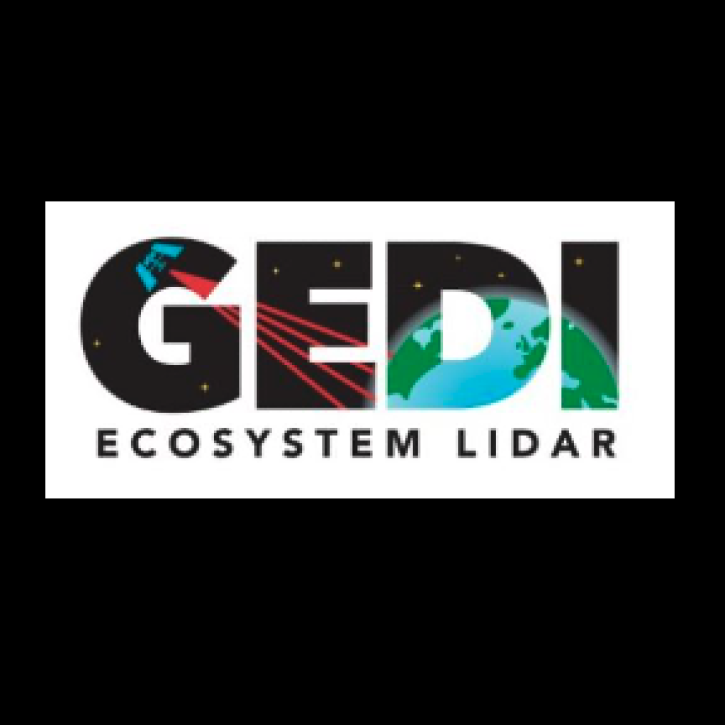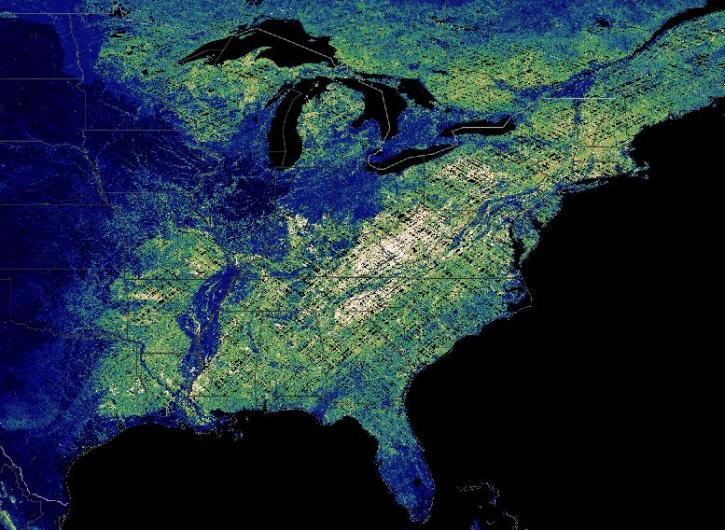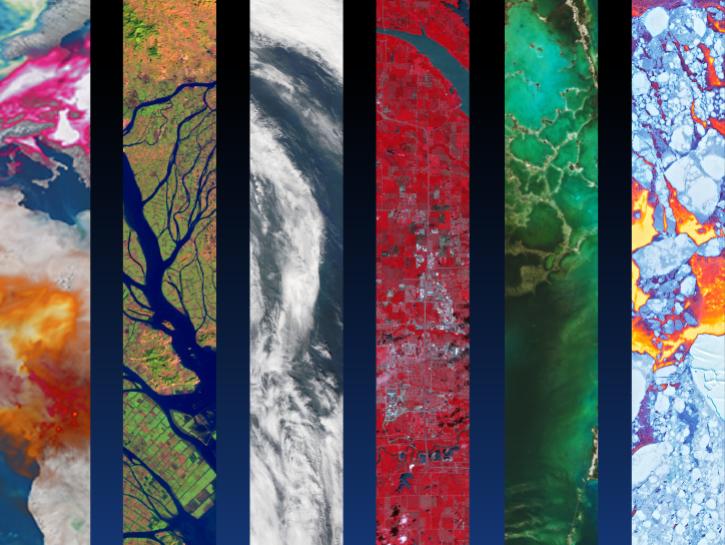Due to the lapse in federal government funding, NASA is not updating this website. We sincerely regret this inconvenience.
Terrestrial Ecosystems Data Access and Tools
NASA has terrestrial ecosystem datasets that help researchers characterize natural areas around the world. Access a range of data and data tools such as AppEEARS, Worldview, and Giovanni to make the most of terrestrial ecosystem data.
Table of contents
Featured Terrestrial Ecosystem Observation Method: GEDI Lidar
The Global Ecosystem Dynamics Investigation (GEDI) instrument is a full-waveform lidar aboard the International Space Station that maps the 3D structure of Earth’s surface. GEDI's three lasers precisely measure forest canopy height, canopy vertical structure, and surface elevation. The instrument's 3D data provide scientists with measurements to calculate the amount of biomass and carbon in forests and how much they lose when disturbed or destroyed.
Data from NASA’s Global Ecosystem Dynamics Investigation (GEDI) mission are adding to our understanding of carbon cycling and the structure and development of global biomes.
7 MIN READ
Join us for an introduction to GEDI Level 3 and Level 4 data products and to learn how to discover, access, visualize, and analyze the data.
Join us for an introduction to NASA’s Global Ecosystems Dynamics Investigation (GEDI) datasets and to learn how to use LP DAAC's web service, data prep script, and Jupyter Notebook Python tutorial series.
The latest dataset from the GEDI mission provides gridded estimates of aboveground biomass density at greater accuracy and resolution than previously available.
8 MIN READ
Terrestrial Ecosystems Datasets
| Dataset | Platforms | Instruments | Temporal Extent | Location Keywords | Spatial Extent | Data Format |
|---|---|---|---|---|---|---|
| Forest Aboveground Biomass for the Southwestern U.S. from MISR, 2000-2021 | Terra | MISR | 2000-05-15 to 2021-06-30 | CALIFORNIA, COLORADO, NEVADA, NEW MEXICO, UTAH | N: 46.2812 S: 28.599 E: -99.0185 W: -126.18 | GeoTIFF |
| Forest Carbon Stocks and Fluxes from the NFCMS, Conterminous USA, 1990-2010 | MODELS | Computer | 1986-01-01 to 2010-12-31 | UNITED STATES OF AMERICA | N: 50.366 S: 23.1873 E: -65.7307 W: -127.686 | GeoTIFF |
| Forest Inventories at Burned and Unburned Tropical Forest Sites, Acre, Brazil, 2014 | FIELD SURVEYS | STEEL MEASURING TAPE | 2014-07-01 to 2014-08-31 | N: -9.73446 S: -9.89909 E: -67.0199 W: -67.637 | CSV | |
| Forest Inventory and Biophysical Measurements, Brazilian Amazon, 2009-2018 | FIELD SURVEYS | VISUAL OBSERVATIONS | 2009-01-01 to 2018-12-31 | BRAZIL | N: -1.5 S: -13.0928 E: -46.8288 W: -67.9824 | multiple |
| Forest Preservation Ranking and Vertebrate Species Richness, Western USA, 2020-2099 | CLM-LSM | Computer | 2001-01-01 to 2099-12-31 | ARIZONA, CALIFORNIA, COLORADO, IDAHO, NEVADA | N: 52.015 S: 27.71 E: -100.502 W: -132.503 | multiple |
| Forest Structure and Biomass Data, La Selva, Costa Rica: 2006 | FIELD SURVEYS | STEEL MEASURING TAPE, CLINOMETERS | 2006-02-11 to 2006-02-23 | N: 10.4219 S: 10.4219 E: -84.0212 W: -84.0212 | multiple | |
| GEDI L4A Footprint Level Aboveground Biomass Density, Golden Weeks, Version 1 | ISS, MODELS | GEDI, Computer | 2019-04-18 to 2019-09-05 | GLOBAL LAND | N: 52.4561 S: -52.2008 E: 180 W: -180 | HDF5 |
| GEDI L4A Footprint Level Aboveground Biomass Density, Version 1 | MODELS, ISS | Computer, GEDI | 2019-04-18 to 2020-09-03 | GLOBAL LAND | N: 53.994 S: -54.1988 E: 180 W: -180 | binary |
| GEDI L4A Footprint Level Aboveground Biomass Density, Version 2 | ISS, COMPUTERS | GEDI, Computer | 2019-04-17 to 2021-08-05 | GLOBAL | N: 53.9933 S: -52.2046 E: 180 W: -180 | binary |
| GEDI L4A Footprint Level Aboveground Biomass Density, Version 2.1 | ISS, COMPUTERS | GEDI, Computer | 2019-04-17 to 2025-03-19 | GLOBAL | N: 55.8 S: -53 E: 180 W: -180 | HDF5 |
Pagination
SHOWING 10 OF 286
Frequently Asked Questions
Earthdata Forum
Our online forum provides a space for users to browse thousands of FAQs about research needs, data, and data applications. You can also submit new questions for our experts to answer.
Submit Questions to Earthdata Forumand View Expert Responses

